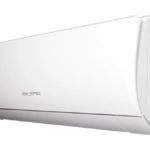What is a multimeter? Purpose and principle of operation of the tool
A multimeter is a handy tool that can be used to measure voltage, resistance and current. It consists of a mechanism enclosed in a housing, as well as measuring leads with probes. The device, types and selection criteria of this tool are described in detail in the article.
The content of the article
Description of the multimeter
If we explain in simple words what a multimeter is, we can say that it is a universal device that is used to measure 3 indicators:
- voltage in Volts;
- current in Amperes;
- resistance in Ohms.
In fact, it performs the functions of 3 instruments - an ammeter, an ohmmeter and a voltmeter. Used for diagnosing electrical networks in the field of electrical engineering and electronics.
Previously, analog instruments were common. But now we can say about a multimeter that in most cases it is a digital device. It is characterized by high measurement accuracy, ease of use and reliability.
The device consists of several elements:
- screen (display) on which the results of the measurements are displayed;
- buttons for one or another option;
- a knob that allows you to select one value for the current measurement, for example, Volts;
- input connectors – allow you to connect one or more test leads.

If you study what a multimeter is needed for, first of all, to measure the basic indicators of an electrical circuit.This allows you to solve several problems at once, including diagnostics, debugging and network repair.
For testing, special test leads are used. They are flexible, located under a layer of insulation, and have 2 colors:
- red is connected to the positive contact;
- black - to negative.
They play the role of conductors that connect the objects being tested to the device. Moreover, each wire has a tip with a probe. It is used to test the circuit.
Types of multimeters
It is clear what the multimeter measures - the basic parameters of current (strength, resistance and voltage). This allows you to identify possible errors and causes of circuit failure. Moreover, measurement work can be carried out using different instruments:
- analog;
- digital.
The former are more affordable, although larger in size. A small microammeter is placed in the housing, creating its own electromagnetic field. As a result, it affects the needle (as in the case of a compass), which deflects along the scale and shows a certain value during measurement.

This device has several advantages:
- affordable;
- not so sensitive to interference when measuring voltage and resistance;
- if the needle fluctuates, you can reliably judge by the dynamics of the signal (in this case, the digital device will only show the average value).
Although there are also quite a few disadvantages:
- large measurement error;
- large dimensions;
- must be set to zero before starting;
- when held suspended or on a vibrating surface, the measurement accuracy decreases;
- Individual values have to be calculated independently.
If we talk about what a digital multimeter is used for, we can say that it has exactly the same purpose as an analog one. but the principle of operation here is different. The device contains an analog-to-digital converter, as well as a display on which the indicators are displayed. Therefore, there is no need to follow the arrow - just read the reading from the screen.
This tool has several important advantages:
- very simple measurement procedure;
- the accuracy of the results is noticeably higher;
- accuracy does not depend on the height at which the device is held;
- even if you connect the polarity incorrectly, it will not be damaged;
- The tool is compact and light in weight.

It is clear what a digital multimeter is intended for. It measures 3 important electrical network indicators, just like analog models. Moreover, the error is small; there is no need to look closely at the arrow. But this tool also has disadvantages:
- costs noticeably more;
- practically does not work in cold weather;
- if the battery runs out, the screen becomes dim;
- If the housing gets hot, large errors may occur.
The operating principle of a digital instrument multimeter differs from an analog one, but in general their scope and purpose are the same.
What parameters should you use to choose a multimeter?
When choosing a specific model, you need to pay attention to several technical characteristics: Among them, safety class, measurement error, dimensions and others are of great importance. The main criteria are as follows:
- Electrical safety class - according to this indicator, tools are divided into those used in low-voltage, local circuits and distribution systems.
- Weight and dimensions – it is better to choose compact digital instruments that take up minimal space and are also very light in weight.
- Measurement error - in everyday life it can be within 2.5%. If used in the professional field, the error should be a maximum of 1.0%. Moreover, it also happens that you have to work with very sensitive equipment. Then the error rate should not exceed 0.5%.
- Resistance level – for use at home, including for repairing your own car, 2 Mohm is enough. If you intend to work, for example, with large cables, the figure should be much higher - up to 60 MΩ.
- The presence of lighting is especially important when repairing in the dark, as well as in hard-to-reach places.

Many devices are also equipped with additional functions. Some of them have a temperature meter. Others have software installed that allows you to connect to your computer via Bluetooth. It is quite obvious why a multimeter is needed in such cases. The obtained data is transferred to a PC for further processing and calculations.
Another useful option is the “Hold” standby mode, when the device will save the latest data on the screen if it cannot be seen at the moment due to the contact of the probes and terminals. Some devices also have water protection, which allows you to work even in water.
From this review it is clear that a multimeter is a device for measuring basic network parameters. Today, analog models are already outdated. Although they are cheaper, the measurement accuracy is usually lower. Therefore, for everyday work it is better to purchase a digital device.





